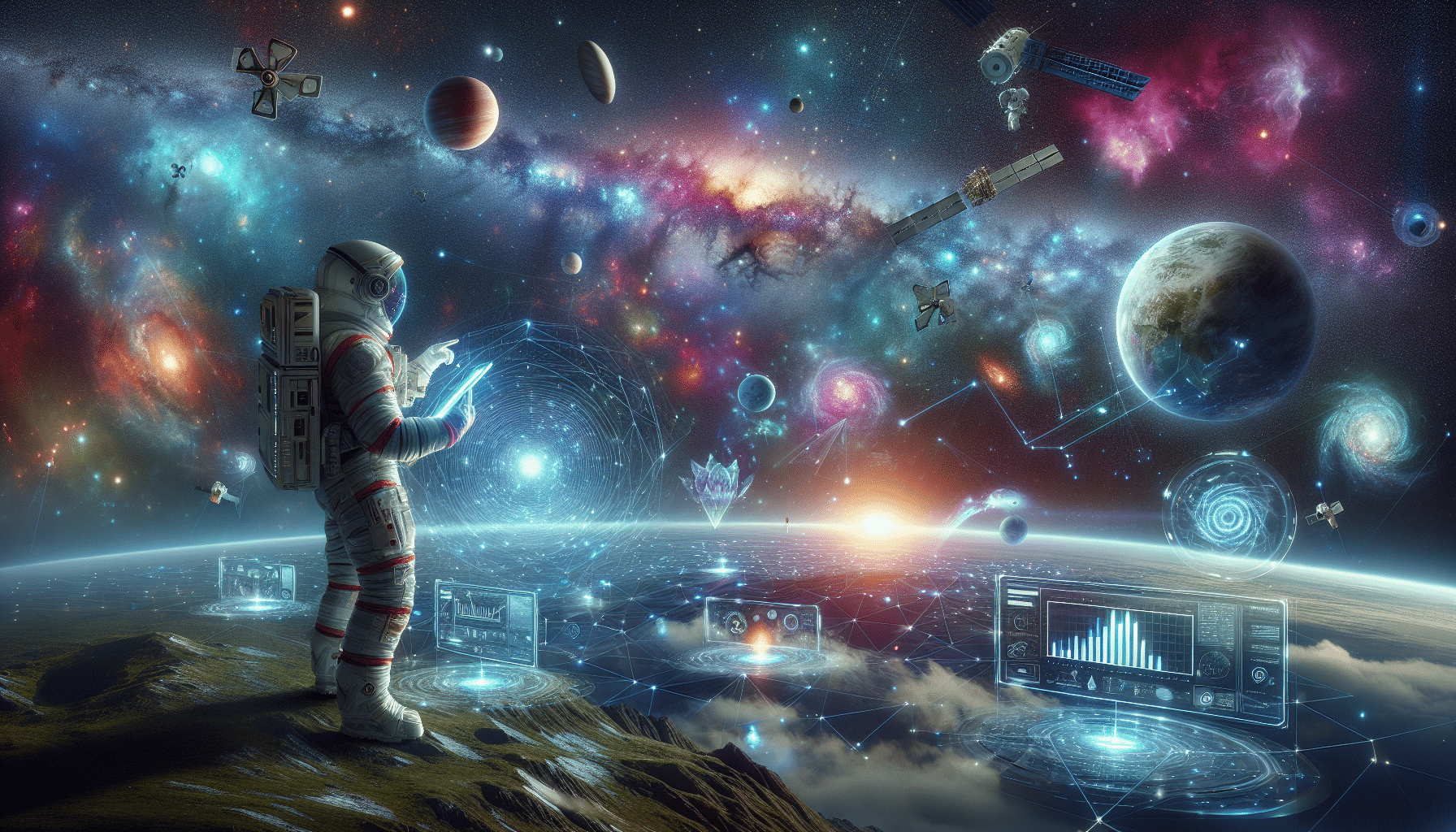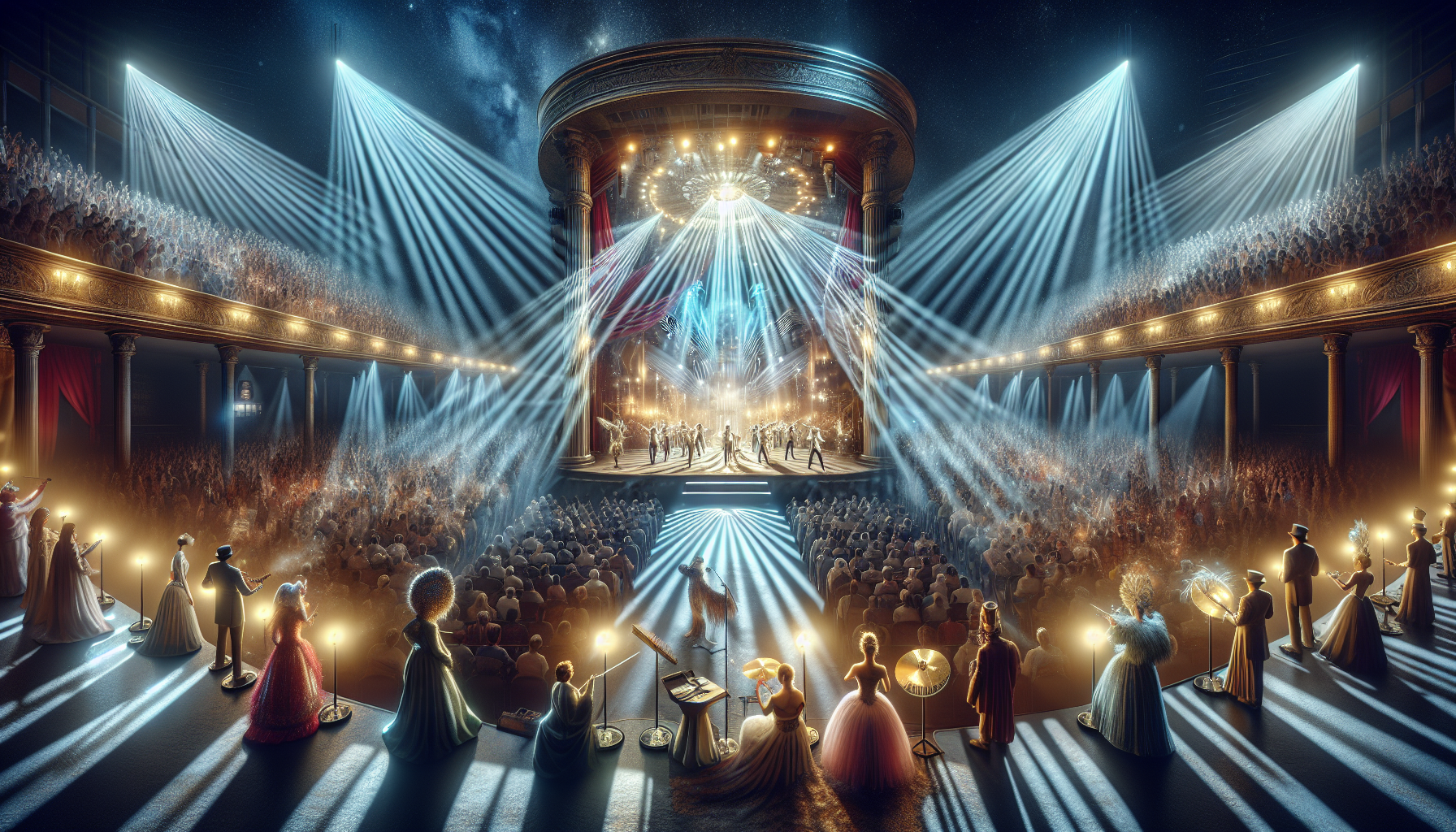Adverts
In the vast cosmos of information, the intersection of astronomy and technology reveals a universe of fascinating possibilities. This space, brimming with innovation, provides a new perspective on how technological advances are shaping the understanding and exploration of space. In this journey, 20 iconic titles will be explored, each highlighting the intrinsic relationship between astronomical observation and the technological tools that make it all possible.
Adverts
The list features a diverse selection that ranges from literary classics to contemporary works that challenge the boundaries of knowledge. The chosen titles not only reflect the beauty of astronomy, but also the innovations that have transformed the way we interact with the cosmos. Topics covered include advanced telescopes, satellites, artificial intelligence and its applications in the search for new worlds, asteroids and signs of extraterrestrial life.
This dive into the digital universe offers a unique opportunity to admire how human creativity and science intertwine, revealing new truths about space. Get ready for an immersion that promises to instigate curiosity and broaden horizons, while providing insights into the works that have shaped the current understanding of astronomy in an increasingly connected world. 🌌✨
Adverts
1. The Evolution of Digital Astronomy
Digital astronomy has transformed the way scientists observe and interpret the cosmos. With the advent of information technology, the collection and analysis of astronomical data has evolved from traditional methods to highly sophisticated digital systems. This shift has not only increased the accuracy of observations, but also enabled an unprecedented amount of data to be analyzed. Images captured by modern telescopes are now processed by advanced algorithms that extract crucial information about the composition and dynamics of celestial objects.
Next-generation telescopes, such as the James Webb Space Telescope, use cutting-edge sensors and image processing techniques to capture light spectra that reveal the presence of chemical elements in planetary atmospheres. In addition, participatory astronomy, which allows ordinary citizens to contribute data and analysis, has become increasingly common, expanding the reach of astronomical research.
1.1 The Importance of Big Data in Astronomy
Big data analysis is one of the most powerful tools in modern astronomy. Observations made by telescopes generate petabytes of data, which need to be stored and analyzed. Tools such as machine learning and artificial intelligence are increasingly being integrated to filter relevant information and identify patterns in complex data. This is especially useful in the search for exoplanets and the analysis of distant galaxies.
A practical example is the use of deep learning algorithms to classify galaxies into different categories based on their morphological characteristics. This approach not only speeds up the analysis process but also increases the accuracy of classifications, allowing astronomers to make faster and more effective discoveries.
2. Advanced Telescopes and Sensors
Modern telescopes are equipped with sensors that not only capture visible light, but also detect radiation at different wavelengths, such as infrared and ultraviolet. These sensors are essential for understanding astrophysical phenomena such as star formation and the chemical composition of planets. CCD (charge-coupled device) technology has revolutionized astronomical imaging, allowing for longer exposures and greater sensitivity to light.
Radio telescopes have also played a crucial role in modern astronomy. They detect radio waves emitted by celestial objects, providing valuable information about phenomena such as pulsars and quasars. Combining different types of telescopes and sensors allows for a more comprehensive understanding of the universe.
2.1 Examples of State-of-the-Art Telescopes
- Hubble Space Telescope: One of the most famous, known for its stunning images and significant contributions to cosmology.
- James Webb Space Telescope: Designed to explore the universe at infrared wavelengths, providing new insights into the formation of stars and galaxies.
- Arecibo Observatory: Although it was deactivated, it was a milestone in radio wave research and the search for extraterrestrial life.
- Vera C. Rubin Telescope: Focused on time studies and transient phenomena, such as supernovae and asteroids.
3. Integration of Computer Simulations
Computer simulations have become an essential part of astronomy research. They allow scientists to create theoretical models of the behavior of celestial bodies and astrophysical phenomena, testing hypotheses that would be impossible to observe directly. Using supercomputers to simulate the dynamics of galaxies or the evolution of stars provides profound insights into the nature of the universe.
One notable example is the Big Bang simulation, which helps scientists understand how the universe expanded and evolved over time. These simulations not only improve our understanding, but also help predict future events and interpret real observations. Data visualization is also a critical part of this process, allowing scientists to effectively interpret and share their findings.
3.1 Common Simulation Tools
ToolDescriptionApplicationsGadgetCosmology simulator that uses N-body methods.Studies on the formation of structures in the universe.FlashAstrophysics simulator that uses hydrodynamics methods.Modeling of supernova explosions and star formation.RAMSESGravitation and magnetohydrodynamics simulator.Studies on galaxy dynamics and astrophysical plasma.
4. Participatory Astronomy and Scientific Citizenship
Participatory astronomy has gained prominence as a way to engage the public in scientific research. Initiatives such as the Galaxy Zoo project allow ordinary citizens to classify galaxies, contributing to larger studies of the structure of the universe. These projects not only democratize science, but also provide valuable data that can be analyzed more broadly.
Additionally, smartphone apps and online platforms have made it easier to participate in astronomical activities. With the help of technology, enthusiasts can collect data on meteors, asteroids, and even rare astronomical events. The interaction between professionals and amateurs has led to new discoveries and a greater enthusiasm for astronomy.
4.1 Examples of Participatory Astronomy Projects
- Galaxy Zoo: A project that allows volunteers to classify galaxies based on their shapes and characteristics.
- SETI@home: An initiative that uses users' computing power to analyze data in search of signs of extraterrestrial life.
- AstroBin: A platform where amateur astronomy photographers can share and catalog their images.
- Planet Hunters: A project that allows citizens to help identify exoplanets by analyzing stellar transit data.
5. The Influence of Augmented and Virtual Reality
Augmented reality (AR) and virtual reality (VR) are changing the way we interact with the cosmos. AR-enabled apps allow users to explore constellations and planets directly from their mobile devices, providing an immersive and educational experience. This makes learning about astronomy more accessible and engaging, especially for younger generations.
VR experiences, on the other hand, offer detailed simulations of space, allowing users to “travel” to different parts of the universe and witness astronomical phenomena firsthand. These technologies have the potential to revolutionize science education and attract more people to the field of astronomy.
5.1 Examples of AR and VR Applications
ApplicationTypeDescriptionStar Walk 2RAAllows users to identify stars and constellations in real time.Universe SandboxRVSimulator that allows users to create and destroy planetary systems.SkySafariRAOffers a map of the sky that can be explored using mobile devices.
6. The Contribution of Robotics to Astronomy
Robotics plays a crucial role in space exploration and astronomical observation. Rovers such as Curiosity and Perseverance are equipped with sophisticated instruments that collect data about the surface of Mars, while automated robotic telescopes monitor the sky for transient events. This technology enables continuous and accurate observations and is capable of performing tasks in extreme environments.
Robotic telescopes can be programmed to observe specific objects or respond to unexpected events, such as supernova explosions or the passage of nearby asteroids. This flexibility is essential for modern astronomy, where the ability to respond quickly to celestial events can result in significant discoveries.
6.1 Examples of Robots and Robotic Telescopes
- Rover Curiosity: Explore the surface of Mars, analyzing the composition of the soil and atmosphere.
- Las Cumbres Robotic Telescope: A network of telescopes that monitors the sky globally, focusing on transient events.
- Rover Perseverance: Tasked with searching for signs of ancient life on Mars and collecting samples for future missions.
- Asteroid Mining Robot: Proposal for robots to explore asteroids in search of valuable resources.
7. Convergence of Astronomy and Technology in New Frontiers
The intersections between astronomy and technology are not just a matter of tools and methods, but also of new frontiers being explored. With the growth of satellite technology and the miniaturization of devices, new opportunities are emerging for data collection and space monitoring. The era of space technology is expanding, allowing missions to be carried out with smaller budgets and greater efficiency.
Communication between satellites, telescopes and ground-based research stations is becoming more integrated, facilitating global collaboration in data collection and analysis. Initiatives such as SpaceX’s Starlink satellite constellation aim to provide internet access to remote areas while also being used to monitor astronomical phenomena in real time, showing how technology can advance space exploration.
7.1 The Future of Digital Astronomy
The future of digital astronomy is bright, with continued innovations in sensor technology, data analysis algorithms, and real-time interactions. International collaboration will also play a key role, enabling astronomers to share data and resources more effectively. The advent of quantum computing could revolutionize the way we process astronomical data, enabling simulations and analyses at scales previously unimaginable.
Furthermore, ethical issues related to data use and privacy in space also need to be addressed as we move into this new era. The intersection of astronomy and technology will continue to challenge our perceptions of the universe, as new discoveries and innovations push us to explore beyond what we thought possible.

Conclusion
As we explored the fascinating digital universe, it became clear how the intersection of astronomy and technology has had a significant impact on our understanding of the cosmos. The list of 20 titles presented not only highlights this connection, but also invites us to reflect on the innovations that are shaping the way we observe and interpret celestial phenomena. Furthermore, it is important to note that, as technology advances, new tools and platforms emerge, allowing both professionals and astronomy enthusiasts to expand their knowledge and share discoveries.
By combining the vastness of space with digital resources, we are not only democratizing access to information, but also inspiring future generations to become interested in science and technology. Therefore, when considering the titles presented, we realize that each of them offers a new perspective on how technology can be an ally in the exploration of the universe. In short, the journey through the digital cosmos is just the beginning of an era where human curiosity and technological innovation go hand in hand. 🌌 With this, we can expect new discoveries to continue to surprise us, expanding our frontiers of knowledge and experience.




